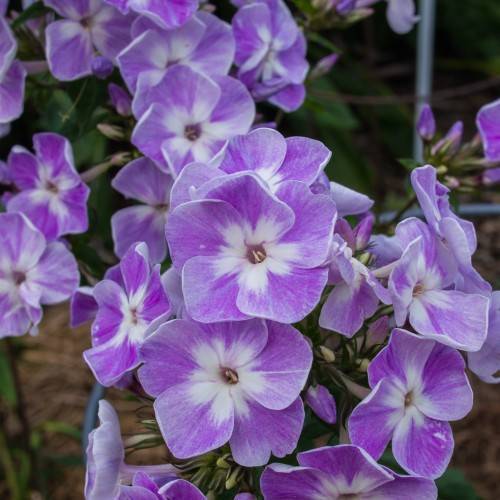
garden phlox
Phlox paniculata 'Katherine'
Also Known As - border phlox,common phlox,common phloxCycle:
Herbaceous Perennial
Watering:
Average
Hardiness Zone:
4 - 8
Flowers:
Flowers In Summer
Sun:
Full sun, Part sun/part shade
Soil:
Rocky , gravelly , dry, Well-drained
Fruits:
Fruits In Autumn Ready In Fall
Leaf:
Yes
Growth Rate:
High
Maintenance:
Moderate
Care Level:
Medium
watering
Garden phlox (Phlox paniculata 'Katherine') should be watered about 1 to 2 inches per week during its growing season, typically between May and September. During periods of extreme heat, phlox should be watered more frequently. For container-grown plants, daily waterings in the afternoon are best. Soil should be kept evenly moist but not waterlogged. During the winter months, phlox should be watered only when soil is dry.
sunlight
Garden phlox (Phlox paniculata 'Katherine') is a species of plant that prefers to grow in full sun for best blooming. This means that the plant should receive at least 6 hours of direct sunlight each day in order to flower. If the plant does not receive enough sunlight, the flowers may not be as full and vibrant as they would be if grown in full sun. In addition, the plant will need to be watered regularly to ensure that it has sufficient water and nutrients to support its growth.
pruning
Garden phlox (Phlox paniculata 'Katherine') is best pruned early to mid-spring, before any new growth appears. Start pruning by deadheading - removing any spent flowers and seedpods. This helps the plant focus its energy on producing more flowers. After deadheading, prune back the stems to a length of 6-12 inches, depending on the size and health of the plant. Be sure to remove any weak or damaged stems, as well as any that are overcrowding the plant. As the season progresses, trim the stems again, after flowering is finished. This will help keep the plant looking tidy. Once a year, in late winter, cut the entire plant back, removing up to 1-third of the stems, until the woody parts are exposed. This helps stimulate new growth and rejuvenate the plant.
